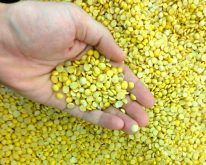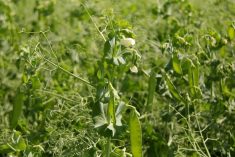CNS Canada –– India, the world’s largest producer of pulses, needs moisture before crops hit the reproductive cycle at the end of January, or existing losses will become amplified, a weather analyst says.
The driest areas in India are important pulse-producing regions in northeastern Andhra Pradesh and neighbouring Uttar Pradesh, said Drew Lerner of World Weather Inc.
“That particular region is hurting pretty bad for moisture.”
The region’s vegetative health index suggests the crops are under pressure, and that particular pocket will probably see lower production, Lerner said.
Read Also

India slaps 30 per cent import duty on yellow peas
India has imposed a 30 per cent duty on yellow pea imports with a bill of lading date on or after Nov. 1, 2025.
“Nothing’s a write-off,” he said. “But if it continues to be dry and warm, then yields will be much lower.”
The crops’ health can reverse quickly, he said, and production losses can be limited if pulse crops get rain before moving through the reproductive cycle.
India’s pulse crops should be entering the reproductive cycle at the end of the month or slightly later due to later seeding.
Lerner said he expects India will see at least some much-needed rain. “The question is whether it’ll be well-timed, or if it’ll come late; at this point I would still lay fairly high odds that there’s going to be some rain.”
He said he also expects cooler temperatures going into the reproductive season, which will help perk up the crops.
“The thing that hurts crops more than anything else in the world is heat during February. If it’s hot, they’re going to lose a lot of crop.”
One of the biggest factors for India’s recent dry stretch, Lerner said, is the positive phase of the Arctic oscillation — a climate pattern with winds circulating counter-clockwise around the Arctic — which didn’t allow storms into India.
The Arctic oscillation recently turned negative, which has allowed a shift to the south.
“There’s plenty of rain moving through the Middle East, which hasn’t been able to move across India, but I think it’s just a matter of time.”
Reproduction may occur at the end of January in many cases, or slightly after, Lerner said, but heat in October and November may have delayed some seeding, as producers opted not to get into the fields until it cooled down.
“I think there’s going to be a small loss, but I don’t think it’ll be nearly as significant as it will be if they don’t get rain.”
— Jade Markus writes for Commodity News Service Canada, a Winnipeg company specializing in grain and commodity market reporting.












